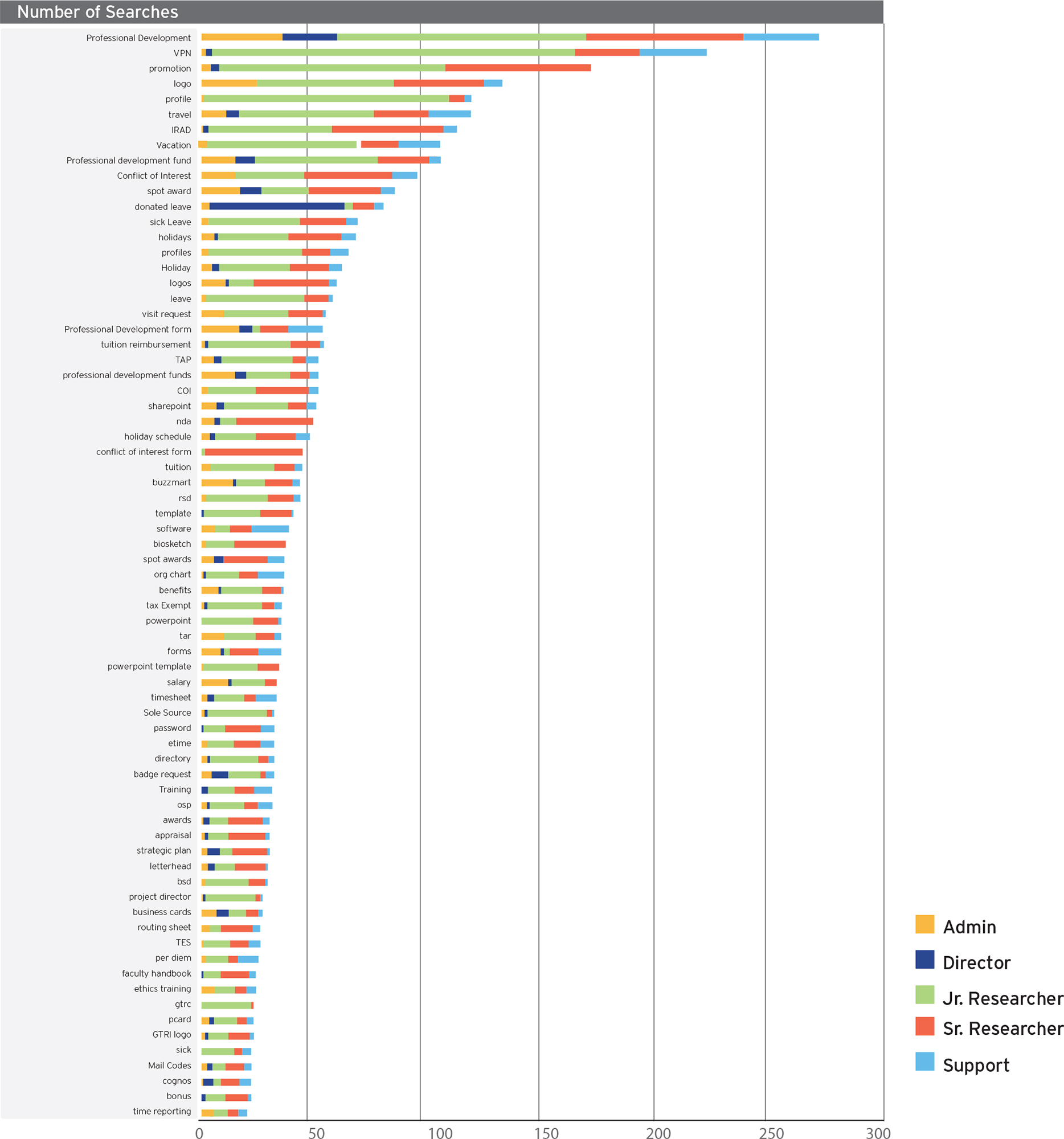RESEARCH METHOD • SYNTHESIS / ANALYSIS TECHNIQUE
78 Site Search Analytics

Analyzing the words and phrases entered into a site search gives organizations insight into what people are looking for, which is an opportunity to evaluate how well site content meets those needs.
If you provide search functionality as part of your website or digital application, you may be sitting on a gold mine of semantically rich data that reveals what your users are searching for online. Site Search Analytics (SSA) is the process for reporting and analyzing the queries submitted as search criteria. Whereas the industries converging around Search Engine Optimization (SEO) or Search Engine Marketing (SEM) are concerned with attracting and driving potential customers to your site, site search analytics is focused on understanding the people who are already on your site, and making sure that they can find the information they need.1 When accomplished, site search analytics can bolster customer retention and conversion rates, not to mention customer satisfaction levels.
Site search analytics data lends itself to qualitative and quantitative analysis—which makes it a prime starting point for qualitative and quantitative researchers within an organization to work together. For qualitative researchers, understanding user intent and what information people want from your site can help you evaluate and improve the quality of the site search results. For those who prefer quantitative data, most search data will immediately reveal a Zipf distribution—a small number of search terms that represent the overwhelming statistical majority of all search activity within a given time frame.2 A Zipf distribution pinpoints exactly which search terms should be optimized for greatest impact. More often than not, this data can be acted on quickly, and both the qualitative and quantitative experts at your organization can agree on the results.
If you are in the early phases of the design process, include specifications for search analytics extraction and reporting in the Product Requirements Documents (PRDs), which can save energy and developer time later. If you are in a digital application’s “Launch & Monitor” phase, make your case by relating site search performance metrics to your organization’s existing Key Performance Indicators (KPIs). For instance, search metrics like % queries that retrieve zero results, % queries where users click on a search result, % queries that are followed by site exit (also known as search bounce rate or search exit rate)3 are likely to make stakeholders sit up and take note as to whether a digital application is meeting end users’ needs.
The search metrics that are revealed by site search analytics can help you monitor, evaluate, and improve your digital application’s overall performance, and continuously align user-centered activity and data to measurable business goals.
1. Rosenfeld, Louis. Search Analytics for Your Site: Conversations With Your Customers. Brooklyn, N.Y.: Rosenfeld Media, 2011.
2. See note 1 above.
3. See note 1 above.

An example of a typical site search analytics Zipf distribution, where a small number of search terms represent the most popular searches.
Courtesy of Josh Cothran, Georgia Tech Research Institute.
